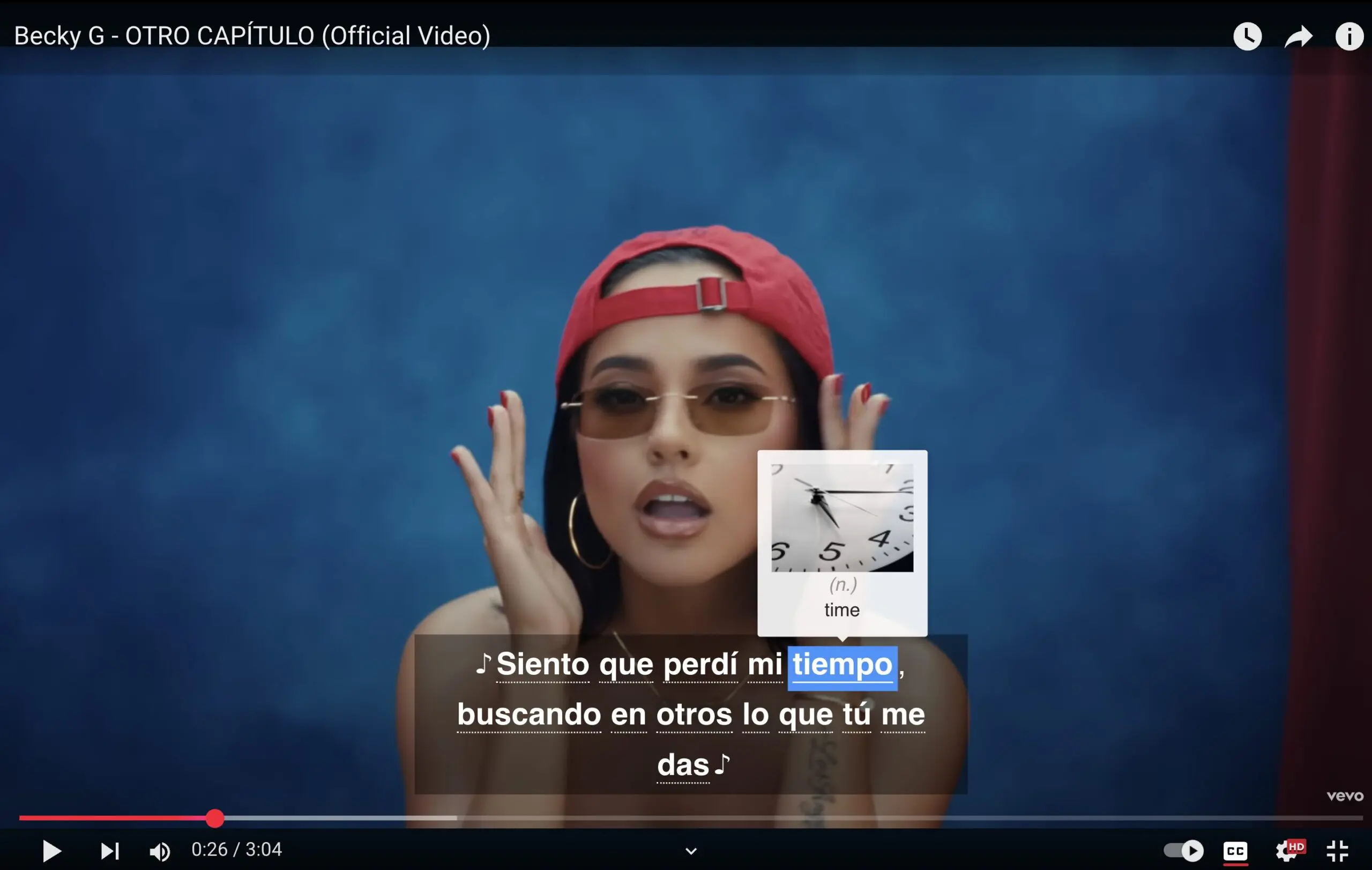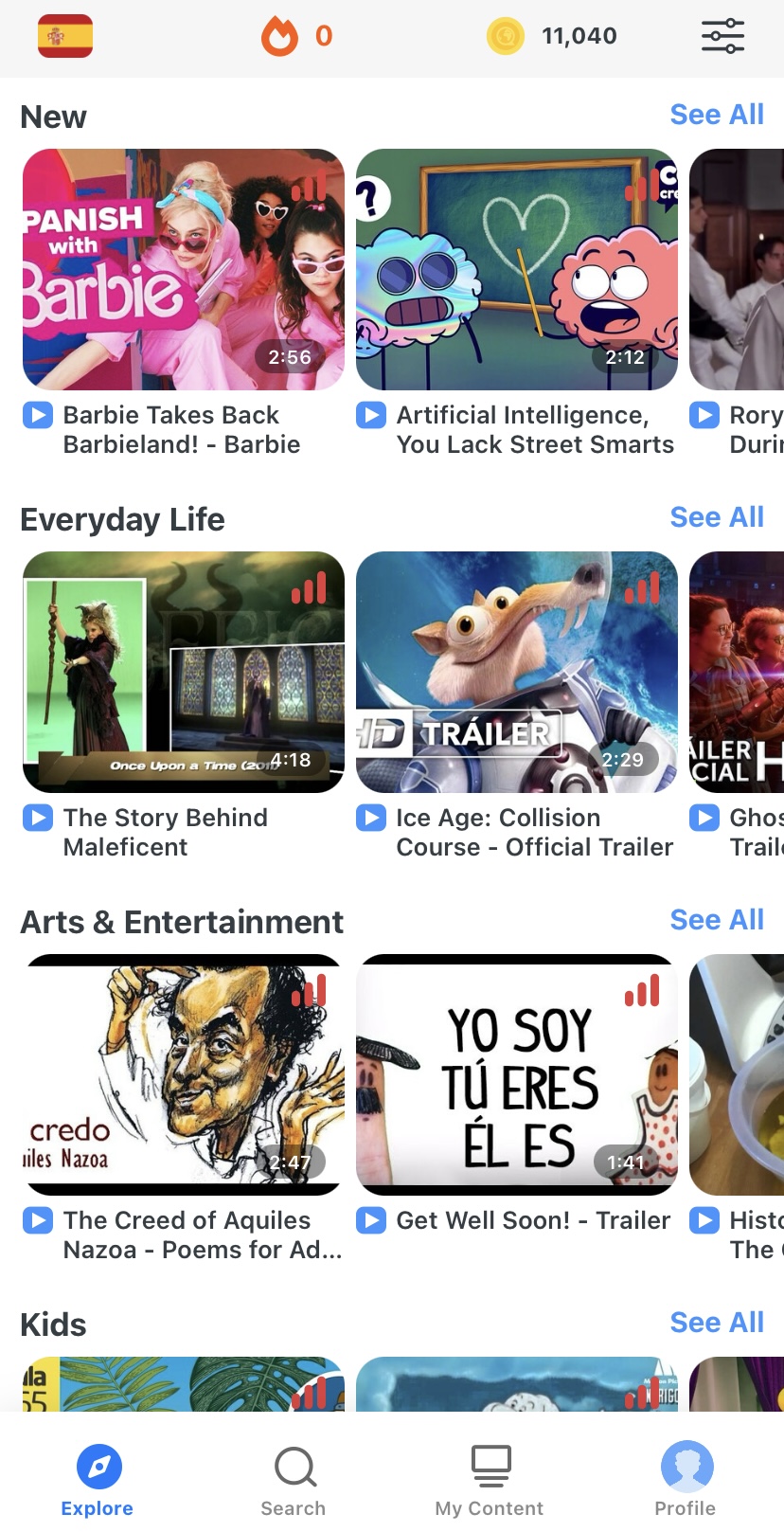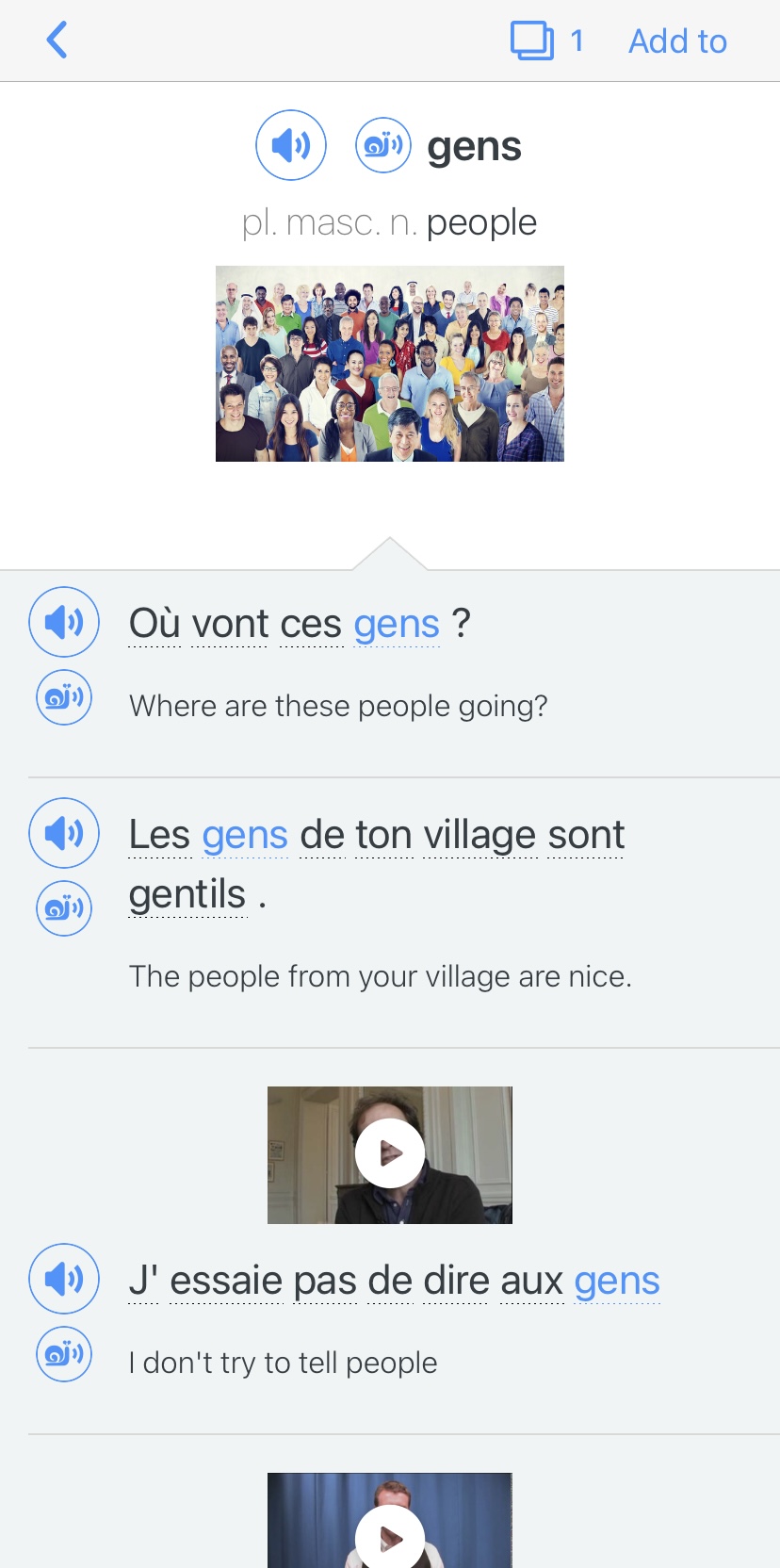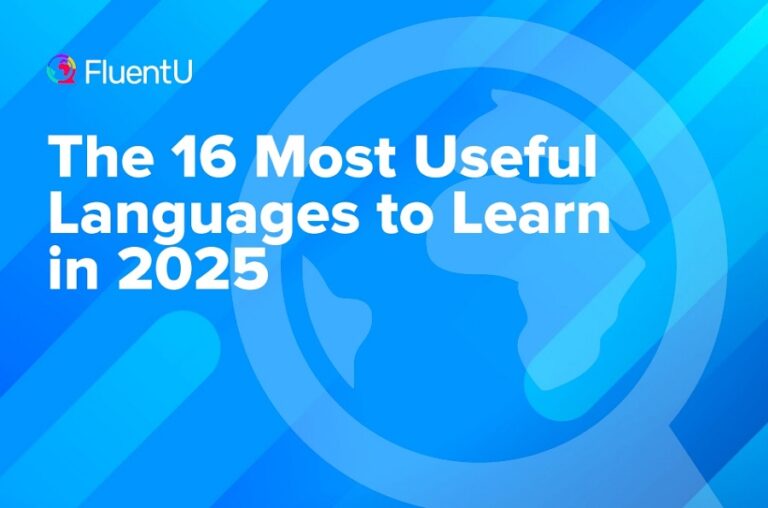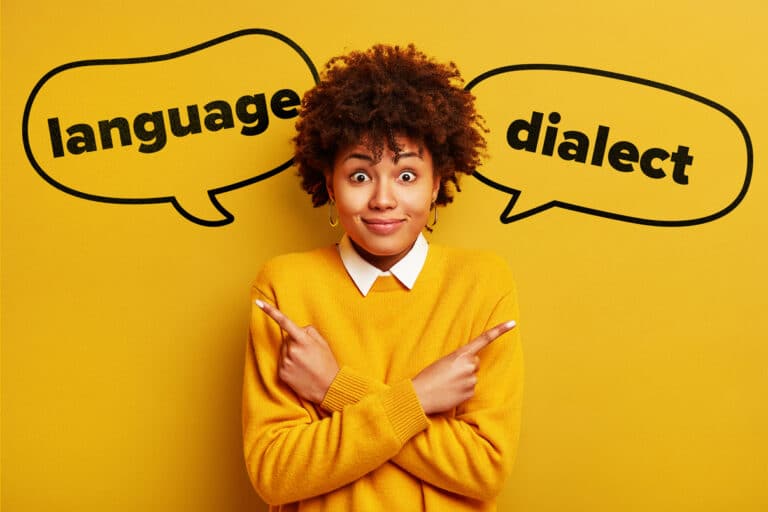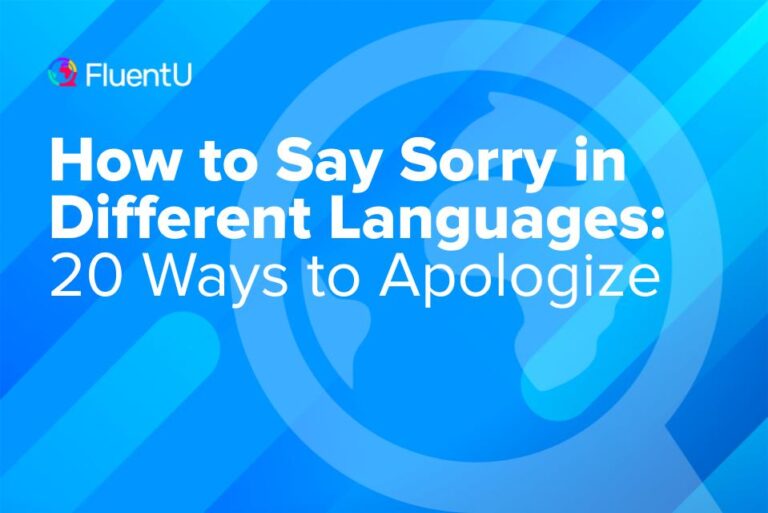The 6 Best Languages to Learn After You’re Proficient in Spanish

So, you’ve mastered Spanish, but the language learning itch has not quite been scratched enough. And it’s true that there are still many, many places around the world where Spanish and English won’t get you far at all.
So, if you’re asking yourself, “what language should I learn?” out of the whole vast linguistic landscape, here are six of the best languages to add on top of your English and Spanish—or just to learn based on their own merits.
Download: This blog post is available as a convenient and portable PDF that you can take anywhere. Click here to get a copy. (Download)
1. French
French might be the number one obvious choice.
English is a Germanic language with huge numbers of Romance loanwords, most of them from French. Spanish is, well, a Romance language to begin with.
If you already know English and Spanish, you’ll go into French basically knowing every other word. Plus, all that grammar that gives first-time French students nightmares? You’ll have been over it.
And once you learn French, you’ll be able to communicate with millions of people all over Europe, Africa and North America who have learned French as their first or second language.
Tip: It’s a good idea to focus on listening from the beginning with French because there are some tricky sounds and the pronunciation isn’t always clear from the spelling. Once your listening is strong, it’s smooth sailing.
2. Portuguese
Portuguese, of course, is already extremely similar to Spanish. Many Spanish speakers can start reading newspapers in Portuguese with little to no preparation.
Despite that, the approximate 220 million native speakers of Portuguese in the world are often quite proud of their own language. Many of them understandably somewhat resent tourists who only bother to speak portuñol (essentially Spanish in a Portuguese disguise).
In fact, as Portuguese isn’t as well known as French or Spanish, few Portuguese speakers even expect foreigners in their home countries to be able to say more than a few words.
That means if you can speak good and correct Portuguese, they’ll understand that you’ve really put in the time to understand their culture and their language, and probably appreciate it.
Tip: Since Spanish is so similar to Portuguese, if you want to learn both, the best way to avoid mixing the two is to achieve a very comfortable level in Spanish first (unless you go for Portuguese first, in which case you can do it the other way around). Give your brain two or three years to really internalize Spanish.
Then, when you begin learning Portuguese, translate from Spanish to Portuguese and vice versa to keep the rules for the two languages separate in your mind.
Additional tip: If you want to learn European Portuguese, it can be tricky to find resources online, but this guide should give you everything you need to get started. If you’re learning Brazilian Portuguese, here are some resources you may find useful.
3. German
Lots of people say that German has hard grammar. In reality, it just has different grammar.
If you already have substantial experience learning Spanish, that experience will have taught you about using the subjunctive as well as grammatical gender in general. That’s a significant advantage.
Ordinary, everyday words in German tend to be more similar to English than Spanish, such as Buch for “book” compared to Spanish’s libro. As vocabulary moves up into higher registers, however, the German words tend to come from Latin roots that look an awful lot like Spanish. One example: “To try” is probar in Spanish and probieren in German.
Here’s a more detailed look at what learning the German language entails.
If you know German, Spanish and English, pretty much every Romance and Germanic language becomes transparent. You could probably pick up Dutch over a summer or Italian in a handful of weeks.
And although German speakers have a reputation for speaking perfect English to learners, that’s far from a universal guarantee. Even in the most metropolitan cities, people will appreciate that you know their language—and that opens doors every time.
Tip: One of the best free resources for starting out as a German learner is Deutsche Welle. You can even explore some of their content through Spanish!
4. Arabic
Okay, so none of the varieties of Arabic are related to either English or Spanish. Arabic is going to be a challenge.
But if you know Spanish, you have a few tricks up your sleeve.
Thanks to around 800 years of Moorish influence in Spain, the Spanish and Arabic languages actually share a deep pool of vocabulary. You can’t describe food or accommodation in Spanish without tripping over Arabic-derived words like azúcar (sugar), alfombra (carpet), albahaca (basil) or naranja (orange).
The benefits of learning Arabic are manifold. The Arabic language covers an enormous swath of the Middle East and North Africa, including millions of people who aren’t comfortable speaking English or Spanish.
Plus, with Arabic, Spanish and English, you’ll know exactly half of the official working languages of the UN!
Tip: Spanish speakers, when it comes time to learn the beautiful Arabic script, you can actually start with texts in aljamiado—a way of writing Spanish using Arabic letters. It’s far, far easier to get used to reading a new script if you already know what it says.
5. Indonesian
Indonesian (and its closely related cousin Malay) is the first or second language of millions in Southeast Asia, and thanks to a huge diaspora, people speak Indonesian all over the world, from Australia to the Netherlands. And have you ever dreamed of the white sands of Bali? Knowing some Indonesian will help you thrill the locals and make your trip an unforgettable experience.
It’s true, Indonesian isn’t related to Spanish, either. However, as the Malay Archipelago has been a Muslim-majority region for centuries, you’ll find that quite a few Arabic words in Spanish also appear in Indonesian.
And the grammar and pronunciation are extremely simple from a European language perspective. No tenses, no cases—just some interesting verb features.
All the time honing your Spanish accent will pay off here: Virtually all the sounds of Indonesian happen to be found in either English or Spanish!
Tip: The biggest hurdle is definitely remembering all the unfamiliar vocabulary. The best way to handle that is to take things slow when you start out and do a ton of review to really make those new words second nature.
But there’s a great surprise in store, because advanced vocabulary in Indonesian is frequently Latin-based and resembles English and Spanish quite a bit! No prizes for guessing the meanings of ekonomi or multikulturalisme.
6. Russian
Now, Russian is a challenge for any language learner. Between the script and the grammar, it’s no cakewalk.
And yet, although Vladivostok and Madrid are practically on opposite sides of the globe, there are several features of Russian that are quite similar to Spanish.
Take the way you say “I like it,” for instance. In both Russian and Spanish, a construction along the lines of “it pleases me” is used.
Someone who knows Spanish also already has a leg up on learning the sounds of Russian: Your old friends ñ and rr are along for the ride once more.
Russian, too, has borrowed heavily from Latin for terms of politics and science. And French was all the rage in Russian aristocracy a few hundred years ago, which means another helping of Latin-derived terms for high society and luxury goods.
Russian is spoken across pretty much all of Central Asia to this day. It’s even still widely understood in much of Eastern Europe, not to mention among the enormous Russian diaspora all around the world.
Tip: Start by doing a lot of listening and reading to get a feel for how all the familiar sounds get rearranged and fit into Cyrillic letter shapes.
If you learn another language after Spanish, you’ll almost certainly gain from some shortcuts like shared vocabulary or similar grammar.
But the most important advantage you’ll have learning any language after any other language is knowing how to learn. Picking up a third language goes significantly faster than your second.
Even if you’re only starting on your second language now, you already have an advantage in that you’re thinking consciously about your choices and considering your options. Why not set the bar high and consider learning multiple languages so you can reap the benefits?
If it takes you three years to get conversational in Spanish, don’t be surprised if you reach the same level in Portuguese in less than 18 months.
Not only can you quickly relate features of any new language to other languages you know, but if you’ve previously learned languages you know yourself and you know that, let’s say, you really don’t like vocab flashcards. So just replace the flashcards with word lists or more reading work. Or focus on listening from the start, if it took you a long time to get used to native Spanish accents.
And along the way, if you realize that you prefer a certain learning method, then don’t delay and go for it for whatever language you learn next. For example, if you enjoy classic book-based learning, then start hunting for dependable texts to serve as your educational bulwark. If you’re an auditory type of learner, then gather a diverse collection of audio clips, from podcasts to music.
You can also utilize digital learning tools, which can be favorable for the modern learner who is keen on multimedia. One such resource is FluentU, a language learning program that is offered for 10 languages (five of which are listed in this post).
FluentU takes authentic videos—like music videos, movie trailers, news and inspiring talks—and turns them into personalized language learning lessons.
You can try FluentU for free for 2 weeks. Check out the website or download the iOS app or Android app.
P.S. Click here to take advantage of our current sale! (Expires at the end of this month.)

Language learning has never been easier than in this day and age, so use the right tools to make your studies fit your style. Be receptive to what does and doesn’t work, and change things up as you need.
Whatever language or languages you choose, it only gets easier and easier.
The only question is—what’s next?
Download: This blog post is available as a convenient and portable PDF that you can take anywhere. Click here to get a copy. (Download)
And One More Thing...
If you're like me and love learning languages through real-world content, FluentU is a game-changer. With FluentU, you're not just memorizing words—you’re learning how native speakers actually use them.
With our newest feature, you can now bring FluentU’s interactive tools to any subtitled content on YouTube or Netflix—or even import YouTube videos directly into your FluentU account!
You’ll also get access to a huge variety of content in our curated video library, from movie trailers to news clips, music videos, and more. The best part? FluentU makes this native-language content accessible for learners of all levels.
While you watch, you can tap on any word in the interactive subtitles to see a definition, an image, audio, and useful example sentences. Want to practice new words later? Add them to your flashcards with one click. No more pausing to look up and write down new words!
And FluentU helps you actually remember what you learn with personalized quizzes, plenty of example sentences, and extra practice with the words you find difficult.
Ready to start learning in a more natural, immersive way? Try FluentU on your computer or tablet, or download the FluentU app from the App Store or Google Play. Click here to take advantage of our current sale! (Expires at the end of this month.)







